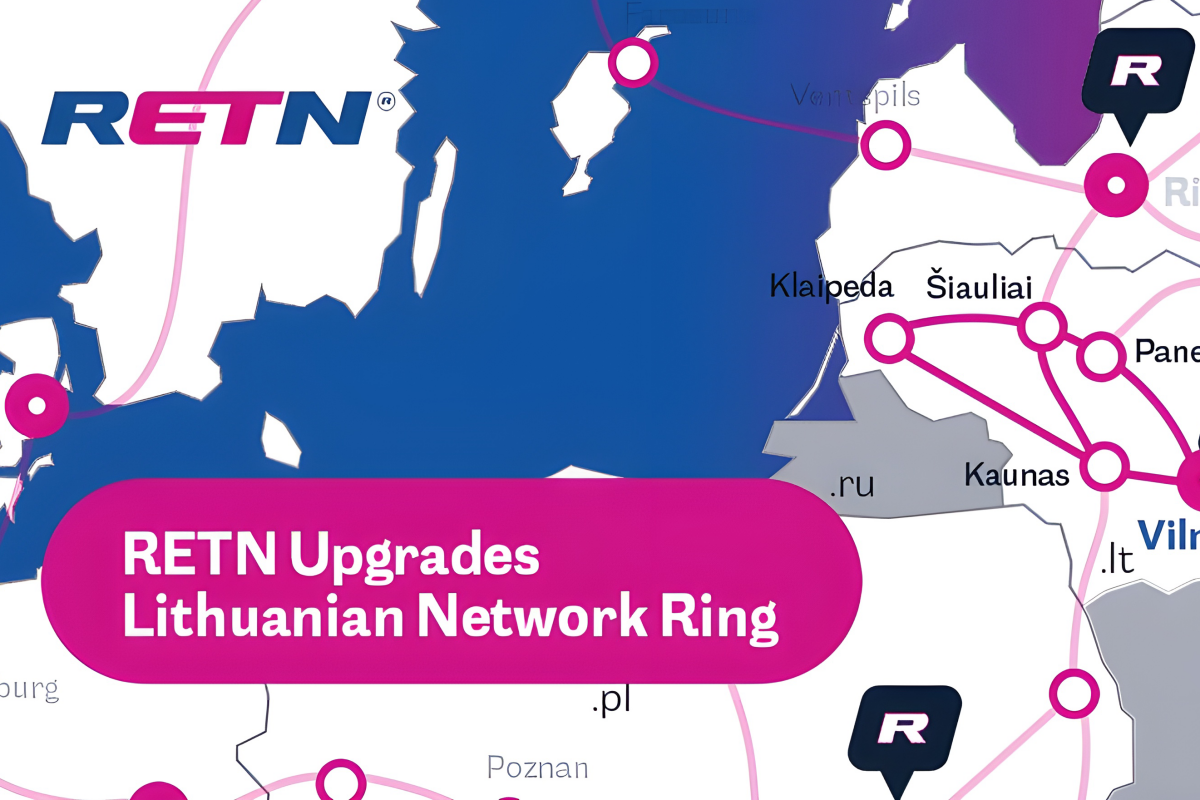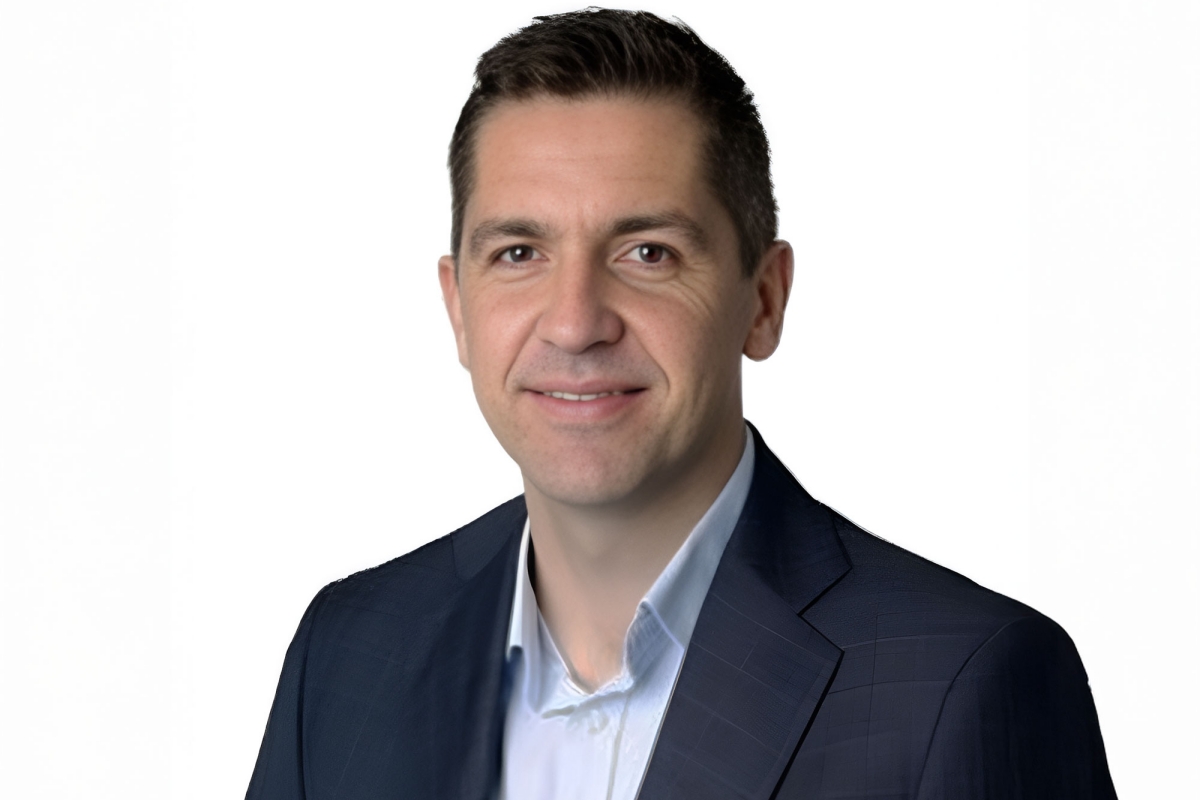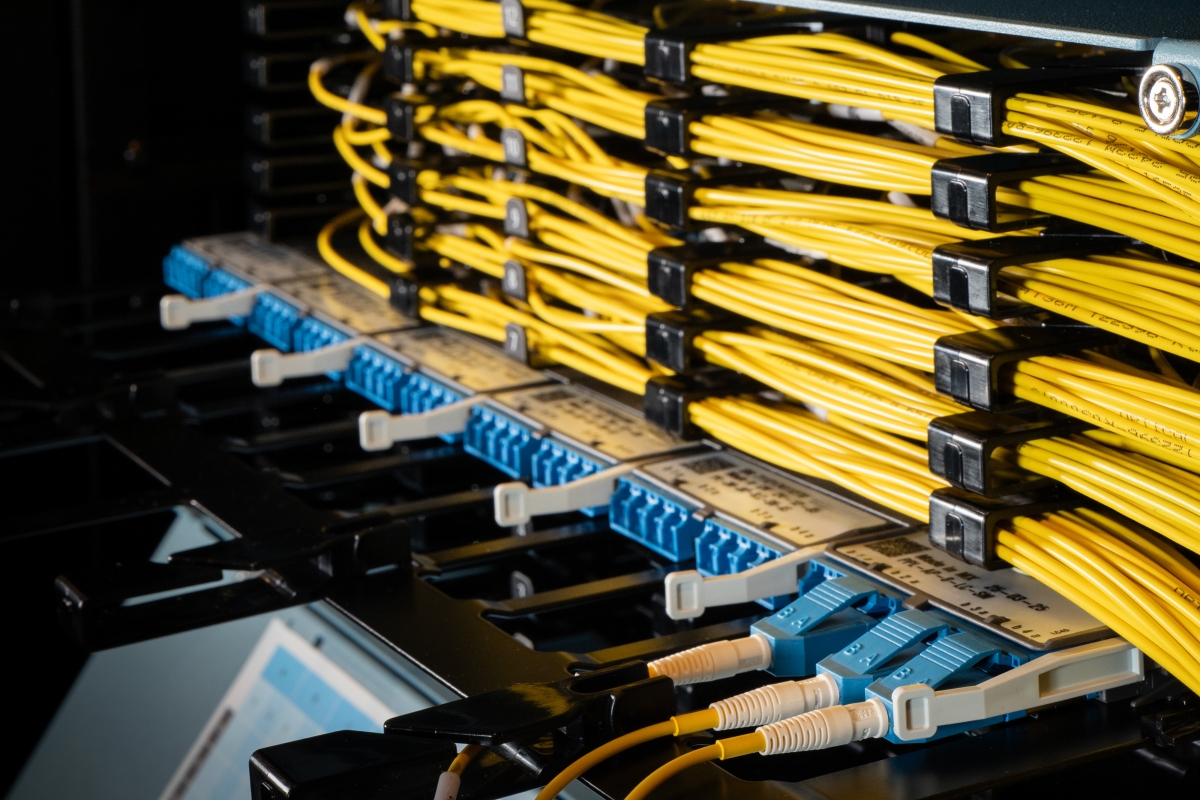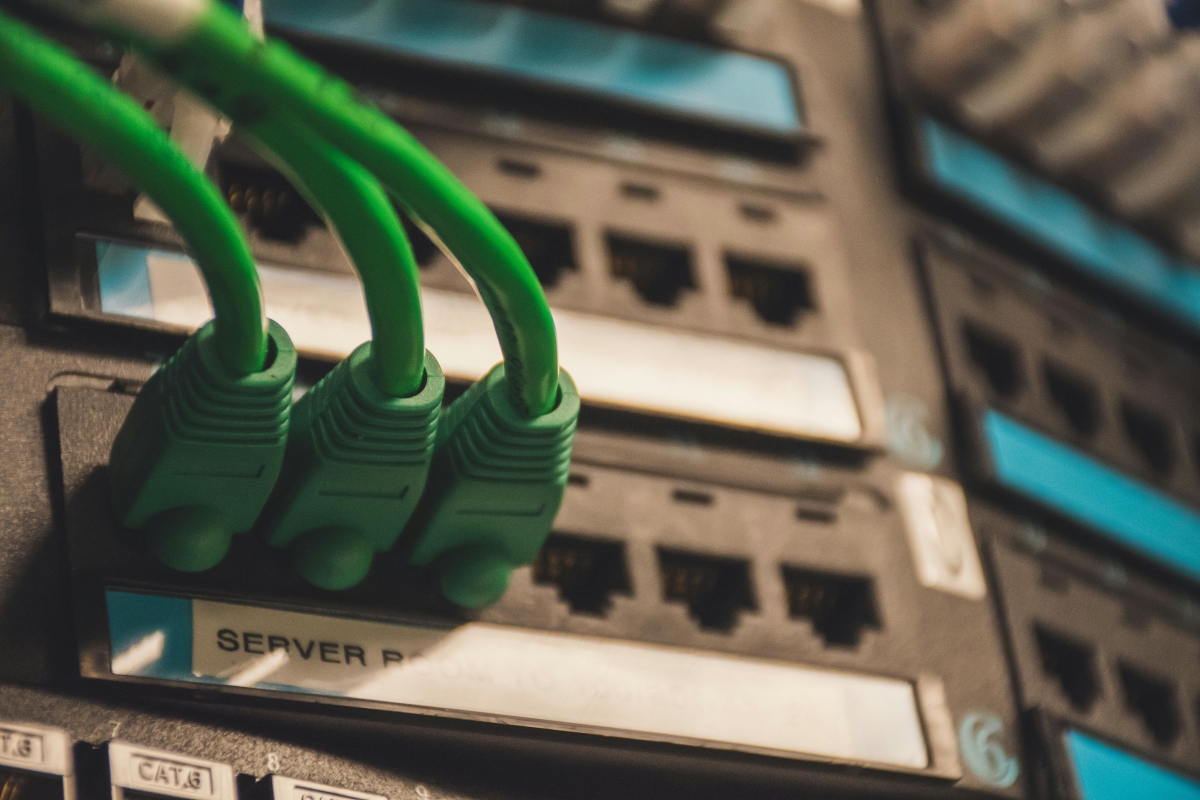Data Centre Infrastructure News & Trends
Data Centre Infrastructure News & Trends
Innovations in Data Center Power and Cooling Solutions
News
Products
Chatsworth launches new eConnect PDUs
Chatsworth Products (CPI), a US-based manufacturer of IT infrastructure equipment, has launched a new addition to its eConnect Power Distribution Unit (PDU) portfolio, introducing a QuadLock outlet design that the company says provides improved outlet compatibility and power reliability for high-density, high-performance data centres.
The new eConnect PDUs with QuadLock outlets aim to support a range of infrastructure requirements, including AI- and GPU-based computing environments, as well as liquid-cooled systems. The units are designed to enhance adaptability, reduce operational risk, and streamline deployment by integrating four outlet types - C13, C15, C19, and C21 - within a single chassis.
CPI’s new offering supports all four outlet types with built-in locking mechanisms, without the need for proprietary power cords.
“With data centres facing rapid technological advancements, including the proliferation of GPU and AI workloads, infrastructure flexibility and power reliability are more critical than ever,” argues Ashish Moondra, Senior Director of Electronics and Software at CPI.
“eConnect PDUs with QuadLock Outlets empower our customers to quickly adapt to changing equipment requirements without sacrificing performance or uptime.”
Key features of the eConnect PDU with QuadLock Outlets include:
• Four-outlet compatibility — One unit supports C13, C15, C19, and C21 outlet types, increasing equipment compatibility and reducing the need for multiple PDU models.
• Secure locking mechanism — Each outlet includes integrated locking to prevent accidental disconnections, including in high-vibration or high-traffic environments.
• High-power support — Systems can deliver up to 57.5kW per cabinet with 100A input capacity, supporting intensive workloads.
• Colour-coded outlets — Aids in load balancing and troubleshooting by making outlet identification easier.
• Flexible integration — Compatible with all six CPI eConnect PDU models - Basic, Metered, Monitored, Monitored Pro, Switched, and Switched Pro - and can be pre-installed into CPI cabinets for quicker deployment.
The modular design is intended to reduce PDU redundancy, simplify inventory management, and support a scalable approach to data centre infrastructure. CPI also highlights the product’s contribution to sustainability goals by reducing waste through long-term compatibility and reusability.
The new PDUs will be available from 7 July 2025 through CPI’s global network of distribution partners.
Joe Peck - 23 July 2025
Data Centre Infrastructure News & Trends
Enterprise Network Infrastructure: Design, Performance & Security
News
RETN upgrades Lithuanian network ring
RETN, an independent global network services provider, has announced the upgrade of its Lithuanian network ring connecting Vilnius, Kaunas, Klaipėda, Šiauliai, and Panevėžys.
The upgrade enhances regional connectivity within Lithuania by extending high-capacity services across these cities, while maintaining Vilnius and Kaunas as key nodes on RETN’s international backbone linking the Baltics with major European hubs.
Working in partnership with fibre provider Skaidula, and in response to customer demand, RETN deployed 100G DWDM transponders across key regional routes, complementing the existing Nx100G and Nx400G services in Vilnius and Kaunas.
The upgraded segments now operate with 500G of installed capacity and are designed to scale to 1.2Tbps and beyond as demand grows.
The upgraded ring improves access across the Baltic region and provides direct routes to border points with Latvia and Poland, with onward connectivity to Warsaw, Stockholm, Frankfurt, Amsterdam, and other key locations.
"As Lithuania continues to grow as a technology powerhouse, RETN is committed to providing fast, secure, and future-proof connectivity to meet the demands of the region's rapidly evolving IT sector,” comments Timur Pertenava, Commercial Director, Nordic & Baltic at RETN.
“Our upgraded infrastructure is designed to support the growing needs of international carriers, cloud providers, and the thriving local unicorn ecosystem."
This upgrade is part of a broader programme to expand RETN's IP and DWDM backbone across the region to support the growing traffic volumes from Lithuania's IT and data hosting sectors.
For more from RETN, click here.
Joe Peck - 22 July 2025
Data Centre Infrastructure News & Trends
Enterprise Network Infrastructure: Design, Performance & Security
News in Cloud Computing & Data Storage
LINX, Megaport partner to expand cloud connectivity for London
The London Internet Exchange (LINX), an Internet Exchange Point (IXP) operator of digital infrastructure across the UK, Africa, and the United States, has today announced a partnership with global Network as a Service (NaaS) provider Megaport to enhance cloud connectivity options for its members.
This collaboration brings an expansion to the LINX Cloud Connect service, enabling access to a broader suite of cloud platforms including Amazon Web Services (AWS), Google Cloud, Microsoft Azure, Oracle Cloud, and others.
Through this partnership, LINX members in London can now use Megaport’s global infrastructure to connect to cloud service providers directly from their existing multi-service port. This means one invoice, port, and point of contact for engineering support, aiming to streamline operations and reduce complexity for network operators.
“This partnership with Megaport is a significant step forward in our mission to ensure we are best serving our UK members,” says Tyrone Turner, Product Manager at LINX. “Our community now have even more choice and control when it comes to low-latency peering and cloud connectivity, all through a single interface.”
Megaport is a LINX member network and ConneXions Reseller Partner.
“This partnership gives LINX members a faster, simpler path to cloud,” claims Emmanuel Sevray, VP of Sales, EMEA at Megaport. “By combining Megaport’s global infrastructure and broad cloud ecosystem with LINX’s interconnection services, UK networks can connect to leading cloud providers with less complexity, accessing the services they need, when and where they need them.”
LINX Cloud Connect is designed to try to simplify cloud adoption. With Megaport’s integration, the company hopes LINX members will gain greater flexibility and reach, empowering them to build hybrid and multi-cloud environments.
For more from LINX, click here.
Joe Peck - 21 July 2025
Data Centre Build News & Insights
Innovations in Data Center Power and Cooling Solutions
Renewables and Energy: Infrastructure Builds Driving Sustainable Power
Sustainable Infrastructure: Building Resilient, Low-Carbon Projects
Allegro argues case for sustainable energy storage
As data centre expansion accelerates to meet the demands of AI, cryptocurrencies, and cloud services, Australia-based developer Allegro Energy is arguing for the relevance and applicability of its long-duration energy storage (LDES) technology in "enabling scalable, sustainable energy solutions tailored to the unique needs of modern data centres."
With data centres operating on consistent, high-load profiles, they are uniquely positioned to benefit from a clean power strategy that combines renewable generation with long-duration energy storage.
Allegro Energy’s modular, scalable, and environmentally-friendly battery systems, according to the company, "present a solution that overcomes the prohibitive cost, scalability, and sustainability challenges associated with traditional lithium-ion or vanadium-based systems."
• Modularity & scalability — Allegro’s LDES systems are designed to grow in parallel with a data centre’s needs, allowing incremental investment and deployment.
• Renewable compatibility — The system pairs with solar and wind energy, aiming to help data centres navigate grid volatility and peak pricing while advancing towards net zero carbon targets.
• Climate-friendly storage chemistry — The water-based electrolyte technology is not resource-constrained, hoping to offer a low-impact alternative that can be deployed at scale.
“The exponential growth of generative AI, cloud computing, and digital services has made energy a critical chokepoint in data infrastructure,” says Thomas Nann, CEO of Allegro Energy.
“We believe the future of high-performance computing does not need to come at the cost of the planet. With our technology, data centres can be powered entirely by renewables, supported by reliable, cost-effective long-duration storage.”
Allegro Energy’s proprietary, locally manufactured micro-emulsion electrolyte technology eliminates the need for scarce or rare metals, reducing fire risk and allowing for extended storage durations at a lower cost.
Joe Peck - 18 July 2025
Data Centre Business News and Industry Trends
Data Centre Infrastructure News & Trends
Innovations in Data Center Power and Cooling Solutions
News
Riello UPS Ireland appoints new Managing Director
Critical power protection specialist Riello UPS Ireland has announced the appointment of Ian Jackson as its new Managing Director.
With more than 25 years of commercial, technical, and management experience in the critical power industry, Ian takes on overall day-to-day responsibilities for leading the company, which is now based in a facility in H2 Baldonnell Business Park, Dublin 22, after recently relocating from its original premises in Ballycoolin, Dublin 11.
Ian has a long history in the power protection industry, including nearly 20 years managing Pure Power Systems, an independent UPS distributor he founded and scaled until its acquisition by a US multinational company in 2017.
He holds a degree in Electrical Engineering from TU Dublin, a Postgraduate Certificate in Energy Systems and Decarbonisation from Dublin City University, and an MBA from Dublin City University Business School.
His appointment signals a renewed push to increase brand awareness of Riello UPS in the data centre, pharmaceutical, food and beverage, medtech, aviation, fintech, and telecoms markets.
Riello UPS Ireland launched in November 2022, becoming the seventeenth subsidiary of the Italian headquartered RPS, the second-largest manufacturer of uninterruptible power supplies (UPS) in Europe.
Ian comments, “I was very fortunate to be the first Irish distributor of Riello UPS systems when I formed Pure Power Systems back in 2003 and am now privileged to directly represent this wonderful company in Ireland.
“I’m really looking forward to reconnecting with my many colleagues throughout the industry and leading our fantastic team to offer the very best in critical power products and services.”
Ian will work closely with Leo Craig, the long-standing Managing Director of Riello UPS in the UK, who, until this appointment, had previously combined overseeing both the UK and Irish subsidiaries.
Leo says, “We are thrilled to welcome Ian to the team. He brings incredible commercial, technical, and management experience, as well as a huge passion for leadership and customer service.
“Riello UPS is already a well-established brand in Ireland with strong links through several resellers and distributors. But we still have huge untapped potential for growth, and we believe under Ian’s stewardship we are now well-placed to fully capitalise on this expanding market for us.”
An uninterruptible power supply (UPS) provides protection against electrical power outages and disturbances. It offers instantaneous battery backup that enables critical equipment like computers, IT systems, and machinery to keep running until the power returns or a standby generator kicks in.
For more from Riello UPS, click here.
Joe Peck - 18 July 2025
Cabling Solutions for Optimised Data Centre Performance
Data Centre Infrastructure News & Trends
Enterprise Network Infrastructure: Design, Performance & Security
AFL launches modular optical fibre platform, DENALI
AFL, a manufacturer of fibre optic cables, connectivity, and equipment, today introduced DENALI, a modular optical fibre platform that is specifically designed for high-growth GPU environments with minimal infrastructure upgrades.
The DENALI platform hopes to position the "facilities of tomorrow" to scale with the increasing complexity and volume of hyperscale and AI workloads.
With its modular design, the DENALI platform is intended to adapt as networks grow, featuring advanced rack-mount hardware, cassettes, and pre-terminated customisable assemblies. The platform delivers up to 288 LC duplex ports (576 fibres) in 4RU of rack space and supports speeds from 10GB to 800GB.
“The market is undergoing a major shift, where AI-driven densification is transforming how data centres approach fibre deployment," says Marc Bolick, President of Product Solutions at AFL.
“The DENALI platform was developed in response to this shift of handling faster scaling, reduced downtime, and solid reliability that AI workloads actually need."
https://www.youtube.com/watch?v=NUsC9fFARRA
Features of the DENALI platform
The platform seeks to "accelerate AI cluster expansions, reduce time-to-market, and drive faster time-to-revenue with stronger ROI on infrastructure builds."
• Simplified deployment process — The platform's design reduces the number of components required for installation, streamlining inventory management and reducing potential points of failure.
• System integration — DENALI is designed for integration with existing infrastructure, aiming to minimise disruption during upgrades and expansions.
• Enhanced fibre management — The platform’s cable management systems hope to reduce maintenance requirements and improve long-term network reliability.
Joe Peck - 17 July 2025
Data Centre Infrastructure News & Trends
News in Cloud Computing & Data Storage
Scalable Network Attached Solutions for Modern Infrastructure
Vawlt 3.2 'supercloud' storage platform launches
Portuguese cloud storage platform Vawlt Technologies has just unveiled Vawlt 3.2, the newest release of its 'supercloud' data storage platform.
The update introduces live, "zero-downtime" cloud switching, expands native coverage to three additional European clouds, brings full MinIO-powered private-cloud integration, and delivers engine optimisations that reportedly cut resource consumption while boosting throughput by up to 40× on high-demand workloads.
New features in Vawlt 3.2 include:
● Switching clouds with "no downtime" – There's the ability to replace underlying clouds on an active Vawlt volume, with data migrating in the background while applications keep running.● Three new EU clouds – Native support for IONOS Cloud, Scaleway, and Impossible Cloud lets organisations build fully EU-resident or mixed-region Supercloud volumes.● MinIO private-cloud integration – On-prem or partner-hosted MinIO clusters now appear in the Vawlt console alongside public clouds for unified policy and data-plane control.● Performance and efficiency boost – The re-engineered storage engine, according to the company, "slashes CPU/RAM needs and delivers up to 40x faster bulk-data transfers on selected workloads."
This release marks a step in Vawlt’s mission to keep data ownership with the organisations that create it. Cloud switching seeks to dissolve vendor lock-in, an expanded roster of EU providers to anchor data inside chosen jurisdictions, and private-cloud onboarding to extend sovereignty to infrastructure businesses already own.
As the EU Data Act’s portability requirements come into force on 12 September 2025, Vawlt 3.2 - the company claims - "equips enterprises to meet the letter of the law while granting operational independence to navigate supply-chain risk [and] shifting regulations."
Ricardo Mendes, CEO & Co-Founder, Vawlt, comments, “True digital freedom is the ability to be independent of cloud providers — including the right to pick the right cloud, or clouds, at any point in time, without fear of downtime, lock-in, or bill shock. Vawlt 3.2 turns that vision into a push-button reality. Whether you’re preparing for the EU Data Act’s portability rules or safeguarding your business against supply-chain risk, you’re now fully in control of where your data lives and how fast it moves.”
Joe Peck - 17 July 2025
Data Centre Infrastructure News & Trends
Enterprise Network Infrastructure: Design, Performance & Security
News
Teleste and VodafoneZiggo roll out DOCSIS 4.0 broadband
Teleste, a Finnish technology company that provides broadband, security, and information technology, has announced an agreement to supply its 1.8 GHz broadband technology to VodafoneZiggo, a cable broadband operator in the Netherlands, enabling the spectrum capability required for DOCSIS 4.0.
Teleste will supply 1.8 GHz intelligent amplifiers, multitaps, and telemetry solutions to VodafoneZiggo’s nationwide network upgrade. The first phase of deliveries has proceeded successfully in 2025, kicking off a multi-year collaboration aimed at transforming the region’s broadband landscape.
With an area in central Amsterdam already upgraded, this roll out represents Europe’s first major deployment of a 1.8 GHz network in preparation for DOCSIS 4.0.
“This partnership marks an important next step in our renewed strategy focused on improving the customer experience, delivering fast and reliable internet across the Netherlands, and making targeted investments in our network and core activities. We continue to develop to ensure our customers enjoy stable WiFi throughout their homes and simplified internet services,” comments Thomas Helbo, Chief Technology Officer at VodafoneZiggo.
Teleste asserts that with its 1.8 GHz amplifiers, VodafoneZiggo can identify and resolve network issues in real time, minimising service interruptions and "ensuring customers enjoy consistent, high-quality internet."
“VodafoneZiggo’s investment in DOCSIS 4.0 technology, with its 10G promise, exemplifies how cable infrastructure will remain competitive for the next 10+ years. This agreement demonstrates our leadership in 1.8 GHz broadband technology and our commitment to meeting the evolving needs of the market,” claims Ulf Andersson, Head of Teleste’s Broadband Networks business.
“We look forward to working closely with VodafoneZiggo to upgrade their network infrastructure and deliver superior connectivity experiences to subscribers.”
The partnership, according to the companies, marks a milestone in the rollout of 1.8 GHz broadband technology across Europe, and this collaboration "will pave the way for other operators in the region to adopt next-generation DOCSIS 4.0 solutions."
Joe Peck - 15 July 2025
Data Centre Build News & Insights
Data Centre Projects: Infrastructure Builds, Innovations & Updates
Liquid Cooling Technologies Driving Data Centre Efficiency
XDS to host 10MW of AI workloads in Saudi's 'Desert Dragons'
UK & Dubai-based XDS Datacentres (XDS), a developer of liquid immersion digital infrastructure, has signed a major agreement with ICS Arabia for the construction and delivery of Riyadh & Jeddah's first 10 MW immersion-cooled data centre.
This collaboration, developed within ICS Arabia's Desert Dragon technology ecosystem, aims to bring advanced computing capacity, sustainability, and scalability to support Saudi Arabia's digital transformation.
Under the terms of the 15-year agreement, ICS Arabia will design, construct, and hand over two 10MW facilities to XDS by Q4 2026. The project will utilise Desert Dragon's Tier III-certified infrastructure and immersion cooling technology to support high-density workloads such as AI, machine learning, blockchain, and other GPU-intensive applications, while the facility will seek to set new benchmarks for energy-efficient, high-performance computing in the region.
The signing ceremony was held on 8 July at Desert Dragon’s headquarters in Riyadh, with key executives from both organisations in attendance.
Ghufran Hamid, CEO of XDS, states, "We are pleased to partner with ICS Arabia on this landmark deployment. The Kingdom represents a key growth market for XDS, and the initial 10MW facilities will showcase the potential of immersion-cooled infrastructure to deliver both performance and sustainability. XDS would like to contribute to Vision 2030 by supplying sustainable infrastructure meeting global ESG standards.
"This isn't just another facility, it's the beginning of a new era. No other data centre company is providing the services XDS will provide, with the switch from air-cooled to liquid immersion. As demand for high-density AI workloads, sovereign compute, and climate-resilient digital infrastructure continues to rise, traditional air-cooled data centres are already struggling to cope. Immersion cooling isn't a niche but an inevitability."
Abdullah Ayed Al Mazny, General Manager at Desert Dragon (ICS Arabia), adds, "Our partnership with XDS reflects our shared vision to deliver cutting-edge data centre capabilities in the Kingdom. Together, we are enabling sovereign digital infrastructure aligned with the ambitions of Saudi Vision 2030."
Immersion cooling at scale
Both Riyadh & Jeddah facilities will feature full immersion cooling with rack densities up to 368kW. This would make them appropriate for services such as AI, GPU-as-a-Service (GPUaaS), cloud-native compute, and hyperscale edge deployment. The design includes redundant N+N power and cooling systems, Tier III certification (TCCF and TCDD), and high-capacity network interconnectivity.
Service and SLAs
Clients of XDS in Saudi Arabia will, according to the company, "benefit from 99.982% uptime guarantees, fully managed colocation services and smart hands, flexible power allocations, GPU-as-a-Service, private cloud, server conversion, customer rack migration and engineering support, Infrastructure-as-a-Service & Software-as-a-Service."
Supporting Saudi Arabia's digital future
The project represents a milestone for both XDS and ICS Arabia as they contribute to building the Kingdom's digital infrastructure and sovereign data capabilities.
The XDS data centre will support national cloud initiatives, artificial intelligence growth, and enterprise workloads that require scalable, low-latency compute infrastructure.
Following the announcement of XDS's successful immersion cooled facility in Dubai, this expansion into the Kingdom seeks to position the company as a key operator deploying immersion cooling at scale for high-density compute across the GCC.
Joe Peck - 15 July 2025
Data Centre Infrastructure News & Trends
Enterprise Network Infrastructure: Design, Performance & Security
Insights into Data Centre Investment & Market Growth
CityFibre agrees £2.3 billion in major new financing round
CityFibre, an independent UK full fibre platform, has reached an agreement with its shareholders and existing lenders on a £2.3 billion financing round, aiming to accelerate its next phase of growth.
The financing includes £500 million in new equity secured from CityFibre shareholders, Infrastructure at Goldman Sachs Alternatives, Antin Infrastructure Partners, Mubadala Investment Company, and Interogo Holding.
CityFibre has also agreed a committed £960 million expansion of its existing debt facilities, supported by lenders including ABN AMRO, BBVA, Crédit Agricole CIB, ING, Intesa Sanpaolo IMI CIB, Lloyds, the National Wealth Fund, NatWest, SEB, and Société Générale. The facility will support CityFibre’s continued network investment and should enable it to connect hundreds of thousands of new customers across its nationwide network.
An accordion facility of £800 million is also being made available to help drive CityFibre’s expansion through the acquisition of full fibre network assets. This facility will be used to finance the company’s M&A pipeline.
Greg Mesch, CEO of CityFibre, comments, “This round of financing will supercharge CityFibre’s next phase of growth as we consolidate the altnet sector, accelerate the pace of customer connections, and unleash the full power of our market-leading 10Gb XGS-PON network for the benefit of all our partners, their customers, and for the UK economy.
“There is huge opportunity ahead for CityFibre and it is [a] testament to the success of the company that we have such strong backing from our lenders and shareholders. This multi-billion-pound investment into critical digital infrastructure will deliver significant benefits across the UK, helping to realise potential and unlocking economic growth.”
This investment marks a significant moment in upgrading the UK’s digital infrastructure. It will deliver world-class infrastructure and services to millions of consumers and businesses and provide the digital foundations for the UK’s economic growth for decades to come.
Rachel Reeves, Chancellor of the Exchequer, says, “Today’s announcement shows Britain is attracting billions of pounds of investment, including through the National Wealth Fund, driving growth across British businesses.
“Investing in our digital infrastructure is key to ensuring our economy is fit for the future. Through our Plan for Change we’re growing the economy by boosting investment in Britain and working hand in hand with businesses to create jobs, to put more money in working people’s pockets.”
Peter Kyle, Secretary of State for Technology, adds, "This investment in CityFibre is welcome news. It's proof our telecoms industry is driving investment into the UK as well as building the digital foundations that will serve generations to come.
“The success of the UK's network providers will help accelerate the rollout of gigabit-capable broadband to millions of homes and businesses across the country. I hope to see even more success stories like this one because this sector is critical not just to improving internet speeds, but to transforming quality of life for communities and creating opportunities in every part of the country as part of our Plan for Change."
Over the past 12 months, CityFibre has announced its first full year of profitability, launched Sky’s full fibre and Gigafast+ services across CityFibre’s nationwide network, completed the integration of Lit Fibre, announced the acquisition of Connexin’s full fibre infrastructure, and reached more than 4.5 million premises with its full fibre network, over half way to CityFibre’s milestone.
For more from CityFibre, click here.
Joe Peck - 14 July 2025

Head office & Accounts:
Suite 14, 6-8 Revenge Road, Lordswood
Kent ME5 8UD
T: +44 (0)1634 673163
F: +44 (0)1634 673173









